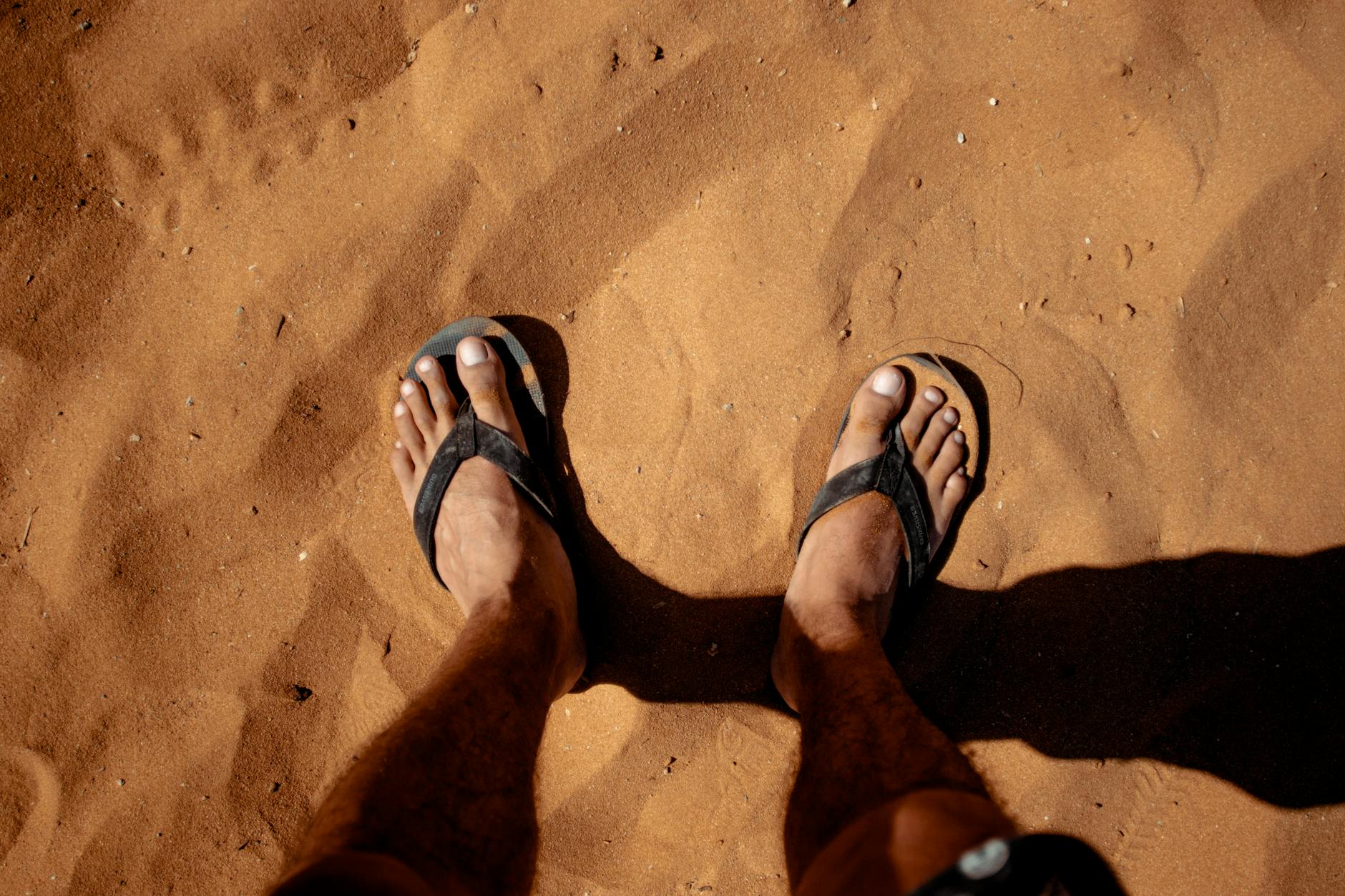Why Australia's Commitment to Conservation Impacts Global Marine Ecosystems

Australia's Conservation Commitment
Australia's commitment to marine conservation is deeply rooted in its vast and diverse coastal ecosystems. A prime focus is the establishment of Marine Protected Areas (MPAs), which safeguard vital habitats and species. These MPAs are designed to limit harmful activities, ensuring that marine life can flourish without the threat of over-exploitation. A recent visit to the Tasmanian Museum and Art Gallery offers rich insights into these efforts, highlighting how science and policy work hand-in-hand to safeguard our oceans.
Marine Protected Areas
Within these protected zones, marine ecosystems are allowed to thrive, contributing to ecological balance and resilience. By safeguarding critical habitats, Australia not only conserves biodiversity but also helps mitigate the impacts of climate change, such as ocean acidification and temperature fluctuations.
Sustainable Fishing Practices
Sustainable fishing is another cornerstone of Australia's marine conservation strategy. These practices aim to reduce bycatch and maintain fish populations at healthy levels. The integration of modern technology and traditional knowledge assists fishing communities in implementing sustainable methods, ensuring that marine resources are preserved for future generations.
Restoration Initiatives
Restoration initiatives in Australia focus on reviving degraded marine environments. Projects such as seagrass planting and coral reef rehabilitation play significant roles in restoring these vital ecosystems. Efforts are also made to involve local communities in restoration, emphasising the importance of collective action.
For those interested in exploring and supporting marine conservation beyond Australia, Cuba travel and South American tours offer unique opportunities to immerse oneself in different ecological settings. Likewise, adventurers keen on Central America travel can witness diverse marine habitats and engage in sustainable tourism practices.
Impact on Marine Biodiversity
Coral Reef Health
As I stand by the shores of Tasmania, near the famed Salamanca Market, I'm constantly reminded of the staggering importance of coral reefs to marine biodiversity. These vibrant ecosystems support an incredible variety of life, yet they're highly susceptible to environmental fluctuations. Rising sea temperatures and pollution are threatening these habitats, which are crucial for fish species like the parrotfish, known for keeping reefs healthy by grazing on algae. The intricacies of coral health demand our attention, much like when observing delicate ecosystems through a microscopic lens.
Endangered Species Recovery
The journey toward the recovery of endangered marine species, akin to my photographic pursuits in pristine locales, is riddled with challenges, patience, and triumphs. For instance, the efforts to help species like the Tasmanian giant crab involve creating marine corridors that offer safe passage and feeding grounds. These initiatives are crucial to maintaining ecological balance and ensuring these species do not vanish from the depths of rivers and oceans where I'd typically venture for photography.
Ecosystem Interconnectivity
Understanding ecosystem interconnectivity is as paramount as the way individual pieces in a mosaic contribute to a stunning whole. Take, for instance, Central America tours that showcase the delicate links between mangroves, coral reefs, and seagrass beds. Each component works cohesively to support marine life, much like how components of climate, soil, and flora interlink to create the vistas I capture through my lens. This delicate balance throws into light the broader implications of our conservation efforts extending as far as antarctica travel, impacting biodiversity on a global scale.
Global Marine Ecosystem Effects
Climate Regulation
Marine ecosystems play a pivotal role in stabilising the Earth's climate. The oceans act as a vast carbon sink, absorbing a significant amount of carbon dioxide and helping to mitigate the effects of climate change. Phytoplankton, microscopic plants that populate the ocean's surface, engage in photosynthesis, a process vital for carbon absorption. However, an ongoing threat is the rising ocean temperatures which impact these tiny organisms. As I observed at the Tasmanian Museum and Art Gallery, the intricate web of marine life, much like our beloved South American ecosystems, relies heavily on these foundational species.
Cross-Border Species Migration
The fluid nature of our oceans enables marine species to traverse vast distances, often across borders. Such migrations are essential for breeding, feeding, and maintaining population dynamics. It’s akin to how species in South America travel across diverse habitats, adapting to environmental changes. However, climate change-induced warming is causing shifts in migration patterns, potentially leading to ecological imbalances.
International Collaboration Efforts
With ecosystems intertwined beyond geopolitical borders, conservation requires global cooperation. Countries around the globe, much like in Galapagos cruise initiatives, unite to protect these vital resources. These partnerships aim for coherent strategies that ensure both local and global biodiversity are safeguarded. By collaborating and sharing knowledge, including lessons learned from local markets like Salamanca Market, we can contribute to preserving these invaluable ecosystems.
Challenges in Conservation
Threats from Climate Change
Climate change poses a significant challenge for marine ecosystems, with rising sea temperatures and ocean acidification threatening biodiversity. These changes impact everything from corals to migratory species that frequent the Southern Ocean. Observations of decline in species like the Adélie penguin, often seen on antarctic tours, highlight the urgent need for adaptable conservation strategies that can mitigate these climate impacts.
Balancing Economic Interests
Finding a balance between economic development and conservation is critical. Industries such as fishing and tourism bring economic benefits but can also lead to habitat destruction if not carefully managed. Sustainable practices, like those observed in south america tours, can offer models for harmonizing economic interests with the preservation of marine environments.
Policy and Governance Hurdles
Creating effective policies and governance structures remains a complex task. Local regulations must align with international conservation goals to address cross-border challenges effectively. The intricacies of policy-making require us to integrate ecological science deeply into legislative processes to ensure that our natural marine resources are protected for future generations.
Checklists for Marine Conservation Efforts
Sustainable Practices for Individuals
In my observations at places such as Mount Wellington and around the Tasmanian Museum and Art Gallery, individual actions greatly influence marine ecosystems. Simple choices like reducing single-use plastics and opting for eco-friendly products can substantially benefit marine life. By choosing sustainable seafood options and supporting local fisheries practicing responsible methods, you help protect vital marine habitats. Additionally, mindful consumption and reduced carbon footprints contribute immensely to climate change mitigation, important factors in preserving our local biodiversity.
Community Engagement Steps
Engaging with local communities is crucial for the success of conservation efforts. Participating in workshops or clean-up activities at iconic locations such as Salamanca Market provides an excellent platform for spreading awareness and encouraging collective action. Initiate discussions about sustainable practices in community forums or online platforms. Whether it's organising beach clean-ups or educational events, community involvement fosters a sense of responsibility and reinforces regional conservation efforts. Events sponsored by institutions like the Tasmanian Museum and Art Gallery often offer avenues for community-driven initiatives that align with broader environmental goals.
Monitoring and Reporting Tools
Regular observation and reporting are vital for assessing the effectiveness of conservation strategies. Utilise citizen science apps to report sightings of marine species or anomalies, contributing data that assists in monitoring biodiversity. Platforms such as iNaturalist are instrumental in understanding species distribution and trends. Providing detailed observations, similar to those used by marine biologists, enhances data quality and supports adaptive management efforts to protect marine environments. Engaging with these tools not only empowers individuals but strengthens collective conservation objectives.


